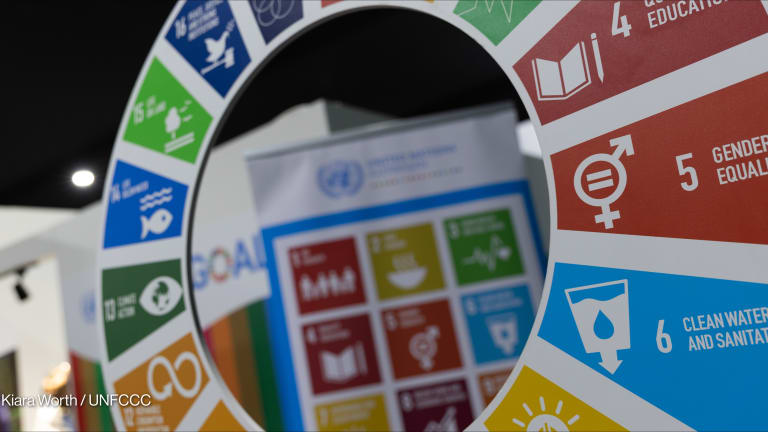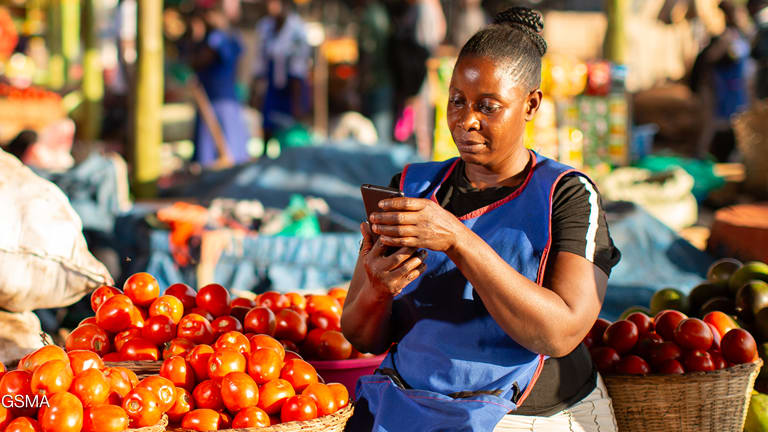
If you need a package delivered across town in Nairobi, Kenya, you can use a tracking app called Sendy to get it there. You press a few commands on your phone and a Sendy representative will arrive at your door on a motorbike, pick up the package, and deliver it to the right destination.
If you live in a Nairobi slum, your children can get a good education, through live teachers and palmtops, at a price you can afford; you can pay tuition from your mobile phone. If you need a bus ticket in Bangladesh, you can buy it through the app Shohoz. If you want to send money anywhere in Bangladesh you can use bKash. If you are looking for a motorbike-taxi in Kampala, Uganda, you can call one to your doorstep using SafeBoda. In several African countries, you can ensure that the medicine you purchase is not counterfeit by checking through mPedigree. If you cannot afford a piece of solar equipment, you can lease it through M-Kopa and pay as you go. When your payment has run its course, the panel shuts down, and you simply walk to the nearest agent kiosk and top up with another affordable installment.
Every imaginable industry — education, energy, medicine, transportation, retail, leasing — is changing, even in the poorest countries, as a result of vast majority of people having powerful computers, commonly known as mobile phones, right in their hands. In the last two decades, mobiles have proliferated to the point that they are ubiquitous today. They have gone beyond connecting people to people, and are touching and transforming industries. The flow of information is the lifeblood of all economic, social, and political activities; as a result, mobiles are propelling the whole low-income world and pivoting it forward.
Why has mobile phone use expanded so rapidly? Connectivity is an elemental human need.
From the beginning of time, we have interacted whenever and wherever possible, increasing our ability to specialize and exchange. Humans have always reached out to others, developing sophisticated language and other means of socialization, despite obstacles. It is part of our nature, and the consequent economic gain has generally outweighed the costs and difficulties. We have always intuitively known, through experience, that connectivity is productivity and quickly embraced mobiles when that became economically feasible and rewarding.
In low-income countries, increased productivity translated into an ability to pay. This process accelerated as the prices of mobiles rapidly declined.
The net effect is billions of computers in the hands of ordinary people in low-income countries. In fact, these computers, especially those in the smartphone category, have vastly more processing power than the desktop computers of high-income countries in the 1990s when the Internet started to proliferate.
While a small minority in the low-income world uses smartphones today, a vast majority of that population is likely to use them in a few years. In addition, many of their features are sprinting ahead with their capabilities and capacities multiplying: forms of media and display, processing power, transmission, different forms connectivity, number of apps, human-machine interaction, and sensing of physical phenomena.
So, why and how will this phenomenon pivot low-income countries towards progress?
First, as stated already, digital technology creates greater productivity and efficiency in the general population. It makes the average person more efficient and better coordinated with her fellow citizens in almost all areas and layers of an economy. This contrasts with our traditional view of capital — the scenario involving a wealthy individual buying factory equipment and employing thousands of wage earners. The economic gain of the average person collectively builds the foundation for greater economic progress. Entrepreneurs then rush in and implement innovations so they can capitalize on that growing economic strength at the lowest levels.
Secondly, mobiles compensate for other deficiencies in low-income countries. That is, they allow these economies to make better use of whatever infrastructure they have. For instance, various forms of physical transport (roads, railways and waterways) are more dedicated to moving physical goods and people after being freed up from moving people who were previously traveling to just to carry information. In a country like Kenya, for example, fewer than 20 percent of the population has access to brick-and-mortar banks, while 80 percent has access to mobile banking.
Thirdly, mobiles are interactive and promote learning without external training. Young people learn by trial and error, many with little or no prior knowledge train themselves not only use but also to develop apps. At the same time, various forms of content and apps can circulate quickly and globally. Young people are more familiar with this digital culture, and low-income countries are particularly endowed with this population.
Fourthly, despite the many potential applications of mobiles and digital technologies, they cannot possibly serve all human needs. Since the mid-1960s, however, the prices of digital technologies have been cascading down. Such radical cost reductions have not taken place in other technologies, such as those involved in energy, transportation, and food production. By increasing the productivity of individuals, digital technologies are raising their purchasing power and enabling them to purchase other productivity-enhancing tools that may not decline in price to the same extent.
So, what can governments and other policymakers do? Capitalize on this extraordinary phenomenon.
First of all, they should facilitate ownership of smartphones by low-income people by eliminating duties or sales taxes. Smartphones allow direct access to the Internet, including the ability to bypass the central switches of powerful mobile phone companies. While regular mobiles are totally dependent on mobile phone companies for connectivity, smartphones can reach the Internet through multiple access providers. In this context, governments should find ways to help entrepreneurs create alternative access to the Internet. Entrepreneurs can create hotspots, while governments build out fiber-optic backbone networks.
Finally, governments should restrict mobile phone companies from expanding into businesses beyond providing basic connectivity, particularly because smartphone proliferation is far from complete. Restricting them to connectivity allows the smaller, more innovative ventures to emerge more easily with new types of services, buying and utilizing that connectivity. Without such restrictions, these smaller and innovative entrepreneurs cannot compete with the large mobile phone companies. By helping a large number of entrepreneurial companies to emerge, this restriction will actually expand the demand for connectivity and, in turn, the business of mobile phone companies.
Digital technologies have propelled billions of people forward; they are now poised to transform entire industries in low-income countries. Because of their near-infinite possibilities, they are also allowing connectivity providers to encroach on the entrepreneurial businesses using that connectivity.
While we welcome transformational technologies, governments must actively demarcate the playing fields in order to contain the forces of encroachment, intrusion and gigantism, so that the pivotal potential of digital technologies can organically come to fruition.
To read additional content on innovation, go to Focus On: Innovation in partnership with Philips.








